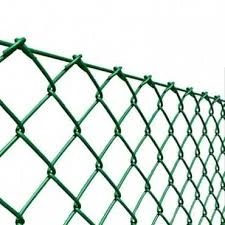The Significance of Prison Fence Wire A Deep Dive into Security Measures
When we think of prisons, images of steel bars and gray concrete often come to mind. However, one of the most crucial elements that contribute to the security and integrity of correctional facilities is the prison fence wire. Though it might appear to be a simple barrier, the design, materials, and functionality of prison fence wire play a vital role in maintaining order inside and outside the prison walls.
Understanding Prison Fence Wire
Prison fence wire typically consists of high-tensile strength materials, designed to withstand attempts at unauthorized entry and escape. This wire is engineered to be extremely difficult to cut or tamper with, providing a robust line of defense. Common types of fence wire used in prisons include barbed wire, razor wire, and chain-link fences, each offering different levels of security.
Barbed Wire This type of wire features sharp edges or points that can deter individuals from attempting to climb over the fence. Barbed wire has been a staple in security fencing for decades, and its effectiveness lies in its physical deterrent, making it painful and risky for anyone who tries to breach it.
Razor Wire An upgraded version of barbed wire, razor wire is even more formidable. It is composed of sharp metal blades attached to a wire which can inflict serious injury. Razor wire fences are often found in high-security areas of prisons and prisons housing violent offenders, as they provide an added layer of protection.
Chain-Link Fences While not as intimidating on their own as barbed or razor wire, chain-link fences are often used in conjunction with these deterrents. They serve as a frame to which barbed or razor wire can be attached, giving an illusion of security while the real strength comes from the sharp edges above.
The Purpose Behind the Design
The primary purpose of prison fence wire is security. It acts as a persistent barrier to prevent inmates from escaping and unauthorized individuals from entering. However, the purpose extends beyond mere physical isolation
prison fence wire

1. Psychological Deterrent The mere sight of a formidable prison fence can serve as a psychological deterrent. Individuals inside may think twice before attempting an escape when faced with a razor-sharp barrier. Similarly, for the public, the imposing nature of fencing can reaffirm the perception of an institution being secure.
2. Controlled Environment Prisons aim to create a controlled environment where inmates can be rehabilitated without threats from the outside world and vice versa. Fence wire plays a vital role in maintaining this controlled setting, facilitating a safe distance between inmates and the general public.
3. Preventing Contraband Beyond preventing escapes, these fences are a barrier against smuggling operations. Prisoners often devise creative means to obtain contraband, but a well-designed fence diminishes such possibilities significantly.
Advances in Security Technology
With advances in technology, modern prisons are increasingly incorporating sophisticated materials and surveillance systems along with traditional fence wire. Electric fencing, for instance, is becoming more common, where the wire delivers a non-lethal electric shock to deter escape attempts. Furthermore, integrated surveillance systems, including cameras and motion sensors, closely monitor the perimeters of these facilities, enhancing the effectiveness of the physical barriers.
Ethical Considerations
While the security provided by prison fence wire is undoubtedly important, it raises ethical questions about the treatment of incarcerated individuals. The severity of physical barriers and the implications of isolation must be balanced with humane treatment and the potential for rehabilitation.
In conclusion, prison fence wire serves a multifaceted role in correctional facilities. It is more than just a physical barrier — it is a psychological deterrent, a tool for maintaining order, and a safeguard against potential threats. As the prison system continues to evolve, the design and implementation of prison fences will likely adapt to meet modern security challenges while addressing the ethical considerations inherent in the incarceration process. Ultimately, while the fence serves to protect, it should also foster an environment conducive to rehabilitation and reintegration into society.
















